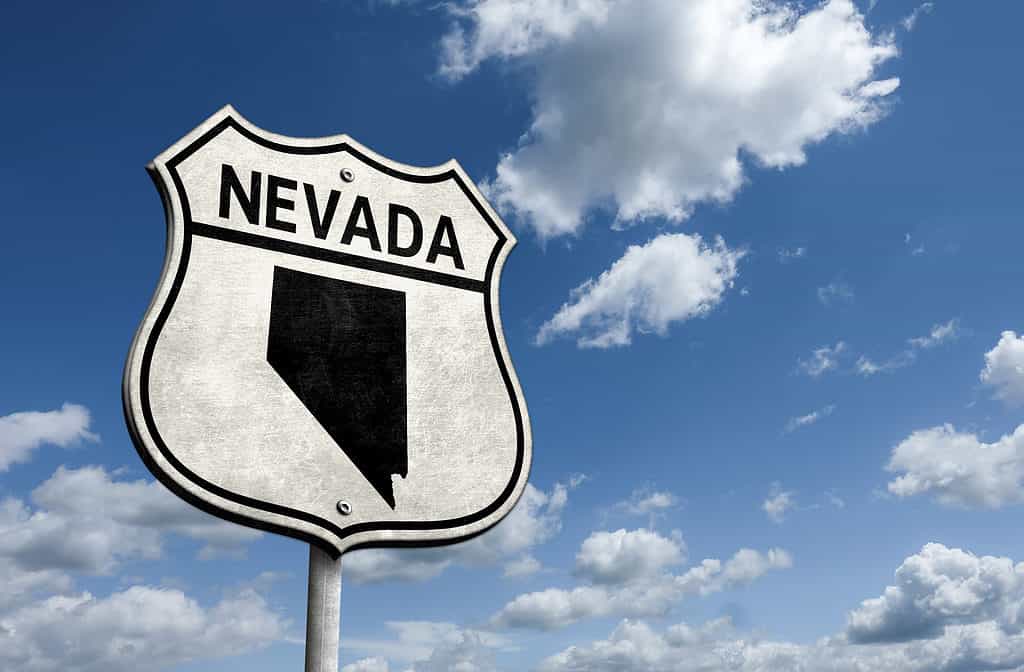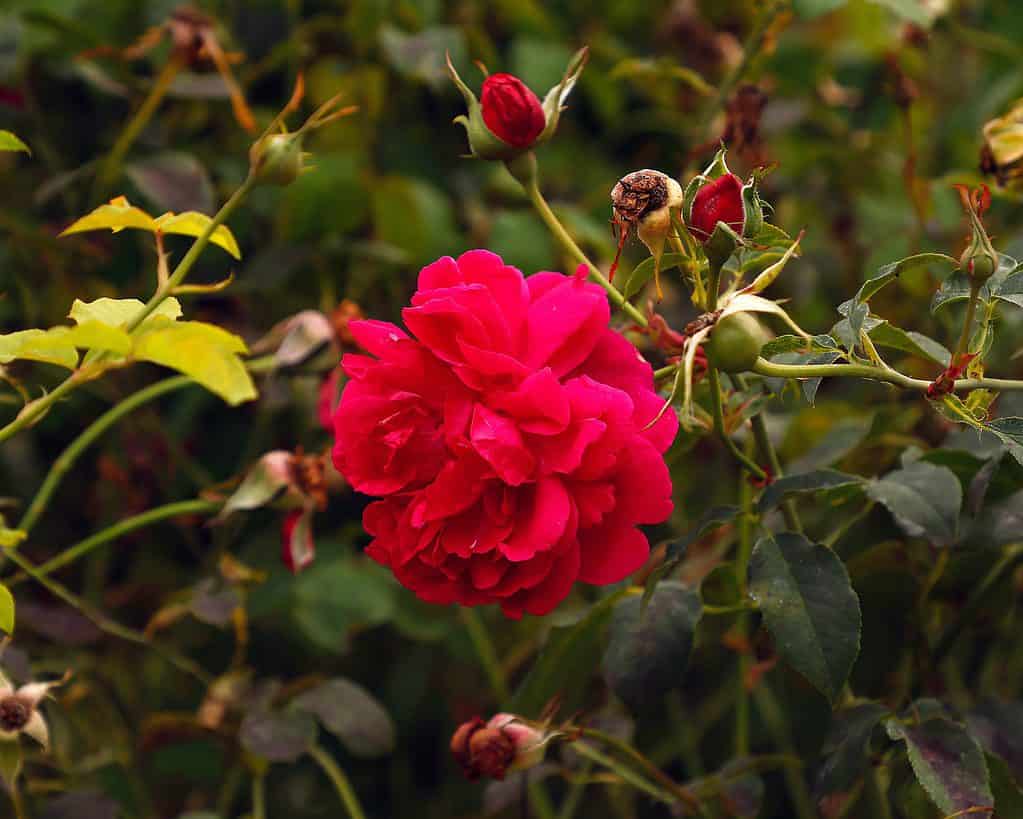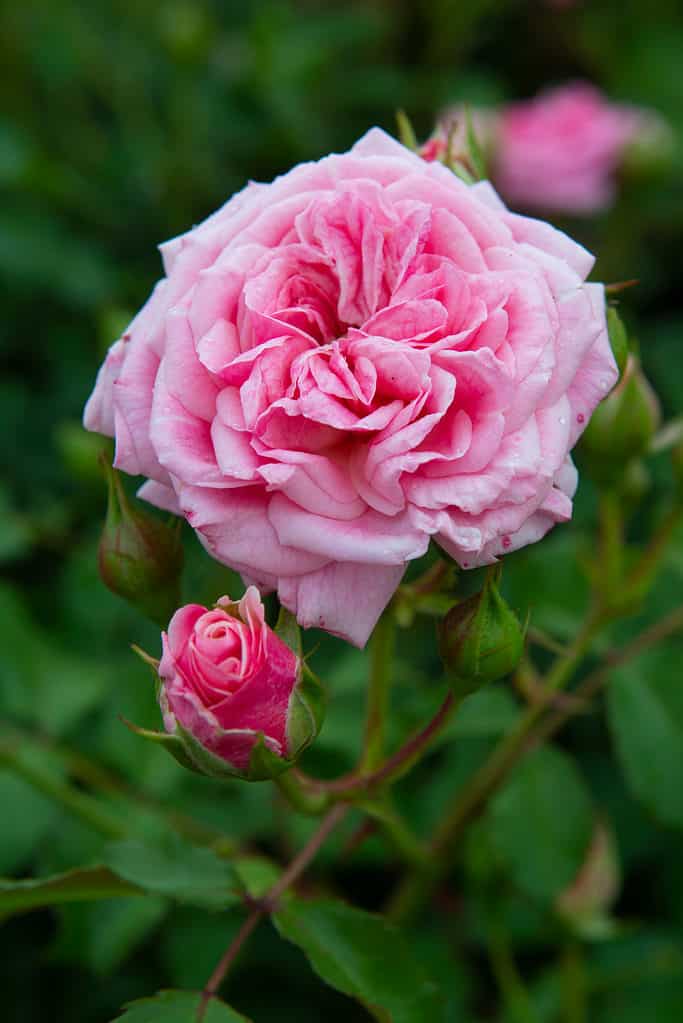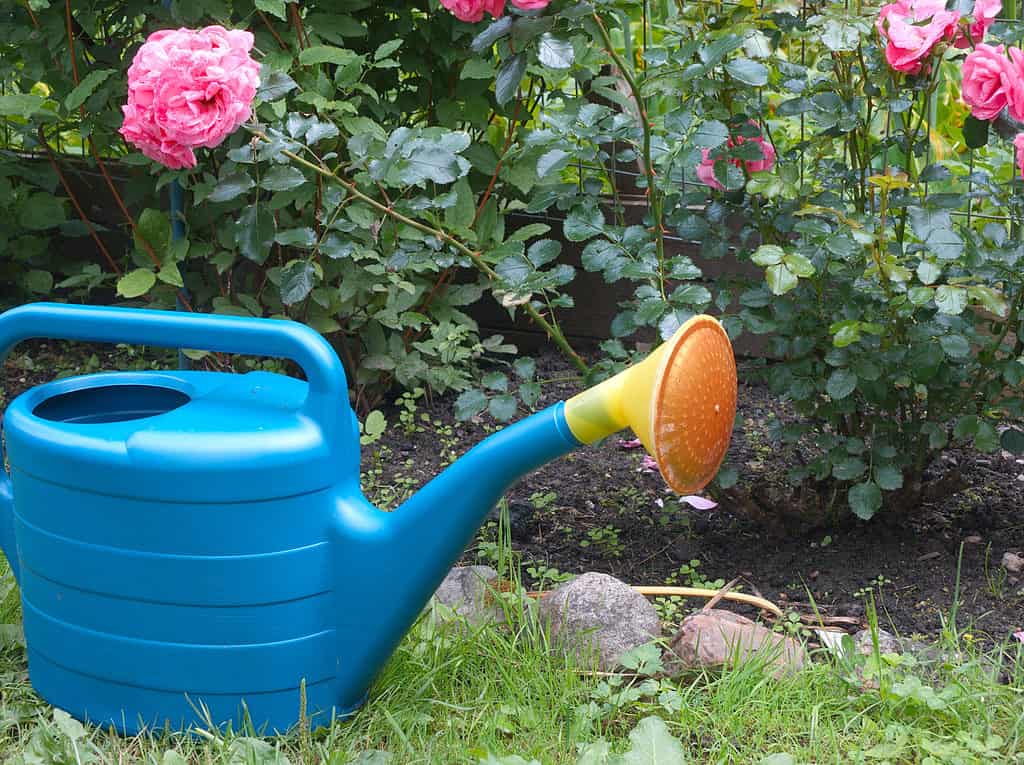When people outside of the state consider Nevada, there’s a good chance their minds immediately jump to Las Vegas and the world-famous Las Vegas Strip. With its hotels and casinos, the Strip is considered the most expensive four-mile stretch in the world. There’s quite a bit of “heat” to be found on this street! But Las Vegas also features another kind of heat: the climatological kind. Las Vegas is located in the Mojave Desert. As a result, the average high temperature in Las Vegas remains above 100°F for the entire summer.
But, as incredible as Las Vegas is, Nevadans will tell you that the state has far more to offer than this one desert city. Nevada’s topography varies widely. Not only are there deserts and plateaus, but there are also soaring mountain peaks. The state features 172 mountains with elevations of 2,000 feet or higher. It surprises many when they learn Nevada has more named mountain ranges than any other state in the United States.
The varied geographical landscape of Nevada means that the USDA plant hardiness zones in the state also vary quite widely. Within Nevada’s borders, gardeners will encounter a whopping 13 different hardiness zones, ranging from Zone 4a-10a. Such an enormous spread of hardiness zones means best gardening practices will change dramatically from one part of the state to another. For rose growers, this is critically important information. Some roses may thrive in one region of Nevada but struggle or fail in other areas of the state.
So, let’s cut through the confusion and talk about which roses can thrive in the different zones throughout the Silver State.

The different regions of Nevada feature vastly different climates.
©iStock.com/gguy44
Types
| Rose Facts | |
|---|---|
| Botanical Name | Rosa spp. |
| Common Name | Rose |
| Plant Type | Perennial |
| Hardiness Zones | Zones 5-8 |
| Sunlight | Full |
| Bloom Seasons | Spring, Summer, Fall |
| Toxicity | Non-Toxic |
You will notice in the table above that conventional roses are recommended for Zones 5-8. While that includes many Nevada gardeners, it also excludes quite a few. Desert dwellers with sweltering summer heat reside in regions well above these zones, while the mountainous regions of the state that can drop to -30°F in the winter are below this range.
But take heart, Nevadans! Expert rosarians have created cold-hardy rose hybrids, along with other varieties that can really take the heat. Let’s explore seven of the best options for every corner of the Silver State.

With 13 hardiness zones in Nevada, some roses may grow in one region but struggle in other areas of the state.
©
1. Rugosa Rose (Rosa rugosa)
For Nevadans who live in the state’s coldest regions of Zones 4a-4b, the Rugosa rose is designed just for you. However, this hardy rose is recommended for Zones 2a-7b, meaning Nevada’s coldest regions in Zone 4 are no problem. And, since it extends up to Zone 7, this plant can thrive in much of the northern and eastern parts of the state, as well.
Rugosa roses feature showy violet/pink flowers with bright yellow centers. The blooms are also long-lasting and will provide lovely color throughout the growing season. It also boasts superb resistance to common rose diseases such as powdery mildew and black spot disease.
This shrub rose grows to a maximum height of six feet with an equal spread at maturity. It features prominent and very sharp thorns, so consider placement carefully. A walkway or other high-traffic area may not be best, as the thorns can easily snag passersby.
Due to the Rugosa rose’s hardiness and disease resistance, it can spread quickly, to the point where it is now considered invasive in some areas. These regions are found mostly in Alaska and the Northeast U.S., so it shouldn’t be an issue for Nevada gardeners. It’s always a good idea to check the regulations in your locality just to be sure, though.

The Rugosa Rose is one of the hardiest roses available today.
©iStock.com/vasare
2. Thérèse Bugnet Rose (Rosa ‘Thérèse Bugnet’)
This cold-hardy rose is recommended for growing in Zones 3-8. This rose is a great option for all Nevada gardens except those in the southernmost part of the state (sorry, Vegas).
This hybrid shrub rose grows from 5-7 feet tall with a similar spread at maturity. The pink-lavender blooms appear in early summer and measure four inches wide. The flowers feature a strong, rosy fragrance. To keep the blooms coming all season long, remove the finished blooms to encourage new bloom growth (a process known as deadheading).

The Thérèse Bugnet rose is another that can handle the cold.
©Olga Ganovicheva/Shutterstock.com
3. Desdemona Rose (Rosa ‘Desdemona’)
A rose hybrid from the famed English rosarian David Austin, the Desdemona is a stunning Old Rose with chalice-shaped blooms. Shakespeare fans will immediately recognize that this rose is named after the tragic heroine in the Bard’s Othello.
The blooms of this rose are a lovely white with hues of the lightest pale pink and emit a strong almond, cucumber, and lemon zest fragrance. But don’t let this rose’s light colors and delicate appearance fool you. The heat tolerance of this plant far exceeds that of conventional roses. It is recommended for Zones 5-11. A sizable majority of Nevada gardeners can include this rose in their displays, including those in the hottest regions of the state.
At maturity, you can expect this bushy shrub rose to reach a four-foot height with a three-foot spread. Deadheading is highly recommended to encourage new blooms during the growing season.

The Desdemona rose is exceptionally heat-tolerant, making it perfect for southern Nevadans.
©Gary Matuschka/Shutterstock.com
4. Thomas à Becket Rose (Rosa ‘Thomas à Becket’)
This English shrub rose is another perfect option for most Nevada gardeners. It is also recommended for Zones 5-11. This rose can thrive in places like Reno, Carson City, Las Vegas, and on and on.
The plant grows in a traditional vase shape and typically reaches five feet high and four feet wide at maturity. The medium-sized nodding flowers feature a deep crimson red with petals that grow in an informal rosette pattern. They emit a strong lemony fragrance. The blooms are a favorite of pollinators such as butterflies and bees.

The Thomas à Becket shrub rose features classic deep red blooms.
©Joe Kuis/Shutterstock.com
5. Knock Out Rose (Rosa ‘Radrazz’)
With many boxing and UFC fights in Las Vegas, Knock Out roses seem to fit right in! These roses are recommended for Zones 5-10, so most Nevada gardeners can grow them with wonderful results.
The Knock Out rose is perhaps the easiest, most maintenance-free rose on the market today. It is a clean rose, which means spent blooms fall off by themselves. Not only is deadheading not needed, but this plant requires little to no pruning at all. It is also highly resistant to disease and pests.
The blooms come in a wide array of colors, including the classic red, along with yellow, peach, white, pink, and blush pink.

Knock Out roses are perhaps the most maintenance-free on the market today.
©Molly Shannon/Shutterstock.com
6. Neil Diamond Rose (Rosa cv. ‘WEKdereroro’)
Leaving the Neil Diamond rose off a list of the best roses for Nevada gardeners would be a crime. After all, the rose’s namesake played one of the most iconic shows in Las Vegas history when he opened the Theater for the Performing Arts at the Aladdin Hotel in July 1976 (it has since been renamed Planet Hollywood Las Vegas). And how’s this for a bonus? The Neil Diamond Rose is recommended for Zones 4-10, meaning this rose can grow in every single garden or flower bed in the state of Nevada, from the highest, coldest elevations to the neighborhoods of Las Vegas. Talk about a showstopper!
This hybrid tea rose boasts double, classically-formed blooms that grow to five inches across. The multi-color flowers feature a dark raspberry red that blends into a soft blush white. Like most hybrid tea roses, this plant features long stems and is fantastic for cut arrangements.
When this stunner is growing in your landscape, no one will blame you if you spontaneously launch into a chorus or two of Sweet Caroline!

The Neil Diamond rose can be the headliner in any Nevada garden!
©haireena/Shutterstock.com
7. Sweet Drift Rose (Rosa ‘Sweet Drift’)
Here’s another rose that can thrive anywhere in Nevada. It’s an especially great option for tight spaces. For Nevada gardeners who live in populated areas with little landscape space, this rose may be just the one for you.
The Sweet Drift rose has a delicate appearance, but once again, looks can be deceiving. It is recommended for growing in Zones 4-11, meaning it can take both the cold and the heat.
This plant only grows two feet high with a three-foot spread at maturity, so it’s great for those small spaces in Las Vegas and other congested areas. The blooms are fluffy, vibrant double flowers that form in clusters and are packed with up to 35 petals. The pastel-pink color of these blooms creates a wonderful cottage garden atmosphere.
The plant features glossy green foliage that is strongly resistant to disease.

The Sweet Drift rose may have a soft pastel pink bloom, but this is no delicate plant!
©InfoFlowersPlants/Shutterstock.com
Planting Tips
Now that you have a few ideas for some roses that would be a perfect addition to your landscape, here are some best practices to help those roses reach their peak potential.
When to Plant
Many Nevada gardeners can plant roses throughout much of the year. In Zones 6-8, roses can be planted in spring (after the last expected frost), summer, or fall.
In Zones 4-5, spring is best. April or early May is a good time to plant your roses.
In Nevada’s regions that are warmer than Zone 8, January or early February is the best time for rose planting.
Where to Plant
Roses need lots of sun, so select a planting site that receives six hours or more of sunlight each day. Also, make sure that the site drains well. In the dry Nevada climate, you will need to water your roses a lot, but you definitely don’t want standing water around the plants. More on that in a moment.
To set your rose plants up for success, prepare the soil at least a month before you plant. Work a good amount of organic material into the soil. Leaf mold, peat moss, compost, or dehydrated manure all work well.
When it’s planting time, work up a two-foot area of soil and mix in additional organic matter. Dig a hole that can accommodate the root ball and place the plant in the hole. Adding some bone meal will provide additional, slow-release nutrients that will significantly benefit the plant. After planting, tamp down the soil and water the plant deeply.
If the soil in your area is sandy, as is the case for many Nevada gardens, you will want to add a soil mixture that is specially designed for roses. A soil composition that is mostly sand will drain too quickly,y and the roses will not receive adequate water.

Adding organic matter to the soil is needed to help roses thrive, especially in Nevada’s harsher climates.
©iStock.com/piyaset
Growing Season
Nevada is the driest state in the U.S., averaging around 10 inches of rainfall per year. Areas around Las Vegas only receive around 4 inches of rain each year. This means lots and lots of watering is necessary for Nevada roses.
In most areas of the United States, watering roses every 2-3 days is recommended throughout the growing season. In Nevada, growers need to water every 1-2 days, especially in the hotter climates within the state.
When watering your roses, you want the moisture to reach 16 inches down into the soil. This will encourage deep, strong root growth. Shallow watering is almost as bad as no watering at all. The roots of the plant are going to follow the available moisture. If the moisture remains shallow, the roots will grow shallow. Shallow roots will spell disaster, especially in the cold and hot climates of Nevada. You don’t want to waterlog your roses, but gardeners in the Silver State can much more easily under-water than overwater their rose plants.
Plan to feed your roses twice a month with an organic fertilizer formulated specifically for roses. This will give your plants some added “oomph.” This is especially important for roses in the harsher Nevada climate areas.

Consistent watering is required for roses to thrive.
©iStock.com/victorass88
Toxicity
All roses are non-toxic. In fact, they are edible! All parts of the plant, including hips, buds, leaves, and petals, are used in food and drink recipes. In fact, there are probably some trendy restaurants in Reno or Las Vegas where you can order a dish that includes roses as one of the ingredients.
Even though all roses are edible, some certainly taste better than others. But, since taste is highly subjective, here is a simple principle that often holds true: if you like the way a rose smells, there’s a good chance you’ll also like how it tastes.
One very important cautionary note: if chemicals have been used to treat the roses, such as synthetic pesticides or fertilizers, do not eat any part of the plant! It can no longer be considered non-toxic.

Roses are sometimes even included in coffee recipes!
©Fascinadora/Shutterstock.com
Summary of 7 Roses You Need in Nevada
Here’s a recap of the seven lovely roses we looked at that can be grown in the state of Nevada.
| Number | Common Name | Botanical Name | Hardiness Zones | Flowers |
|---|---|---|---|---|
| 1 | Rugosa Rose | Rosa rugosa | Zones 2a-7b | Showy, long-lasting violet/pink flowers with bright yellow centers |
| 2 | Thérèse Bugnet Rose | Rosa ‘Thérèse Bugnet’ | Zones 3-8 | Pink-lavender blooms with a strong, rosy fragrance |
| 3 | Desdemona Rose | Rosa ‘Desdemona’ | Zones 5-11 | White with hues of the palest pink; strong almond, cucumber, lemon zest fragrance |
| 4 | Thomas à Becket Rose | Rosa ‘Thomas à Becket’ | Zones 5-11 | Medium-sized flowers of a deep crimson red that emit a strong lemony fragrance |
| 5 | Knock Out Rose | Rosa ‘Radrazz’ | Zones 5-10 | Wide array of colors, including classic red, yellow, peach, white, pink, and blush |
| 6 | Neil Diamond Rose | Rosa cv. ‘WEKdereroro’ | Zones 4-10 | Double, classically formed multi-color flowers feature a dark raspberry red that blends into a soft blush white |
| 7 | Sweet Drift Rose | Rosa ‘Sweet Drift’ | Zones 4-11 | Pastel-pink fluffy, vibrant double flowers |
Grow Some Nevada Roses!
While Nevada may not be considered by many to be among the premier U.S. states for growing roses, the influx of hybrid roses over the last few decades has essentially thrown the rule book out the window. While your Nevada grandparents may not have been able to grow roses with much success, you absolutely can. Make plans now to beautify your little corner of the Silver State with some roses during the next growing season!
The photo featured at the top of this post is © Alisa_Ch/Shutterstock.com
Thank you for reading! Have some feedback for us? Contact the AZ Animals editorial team.






